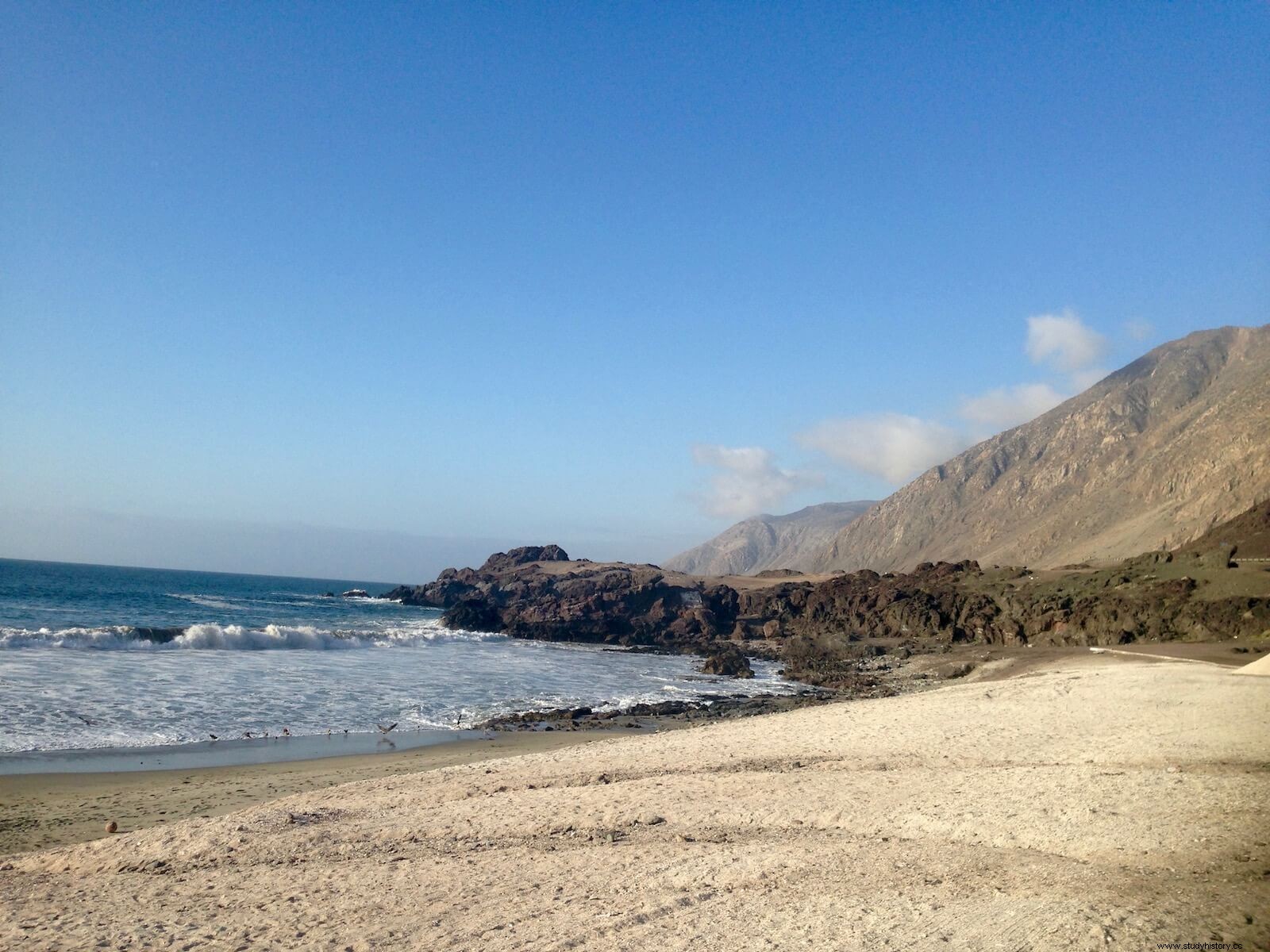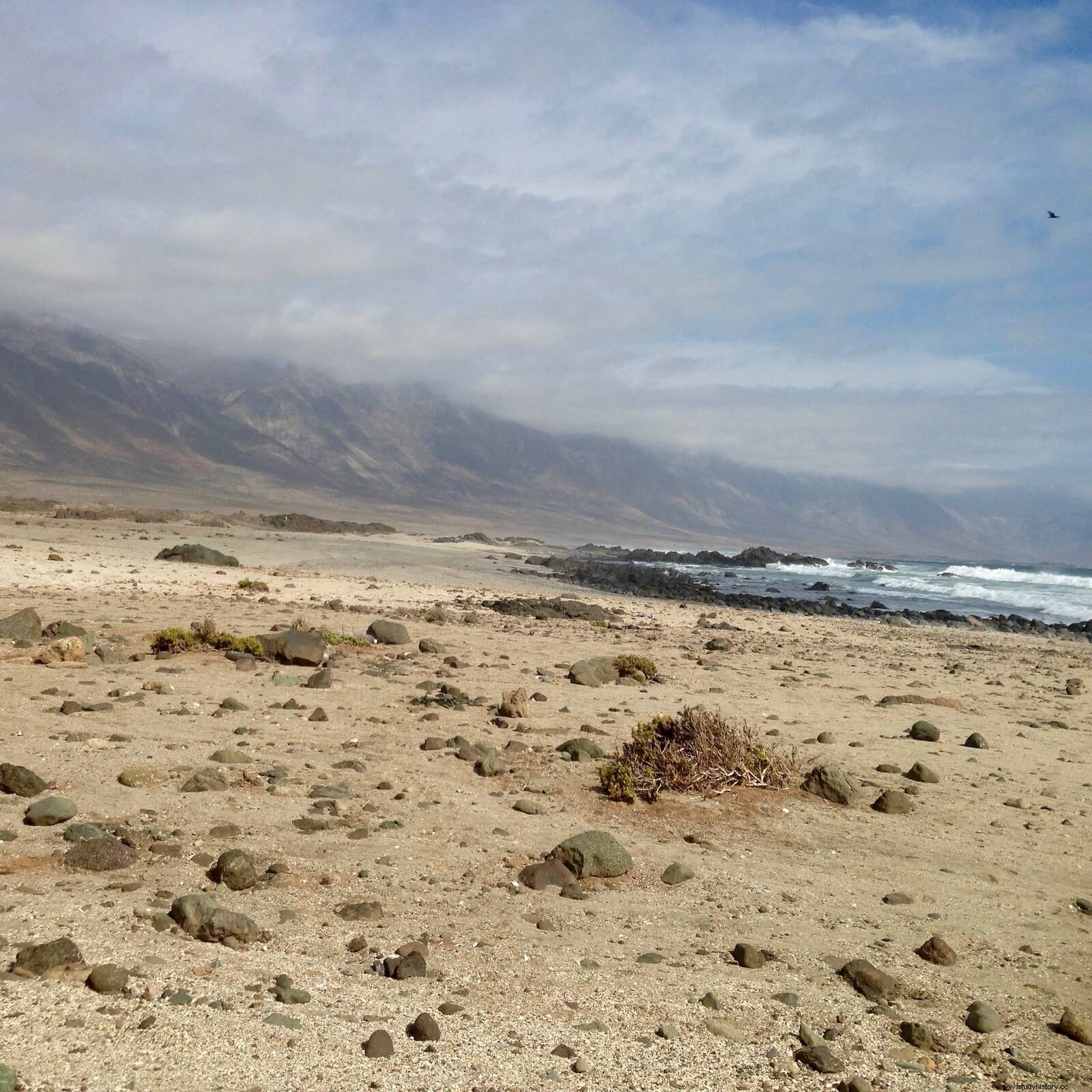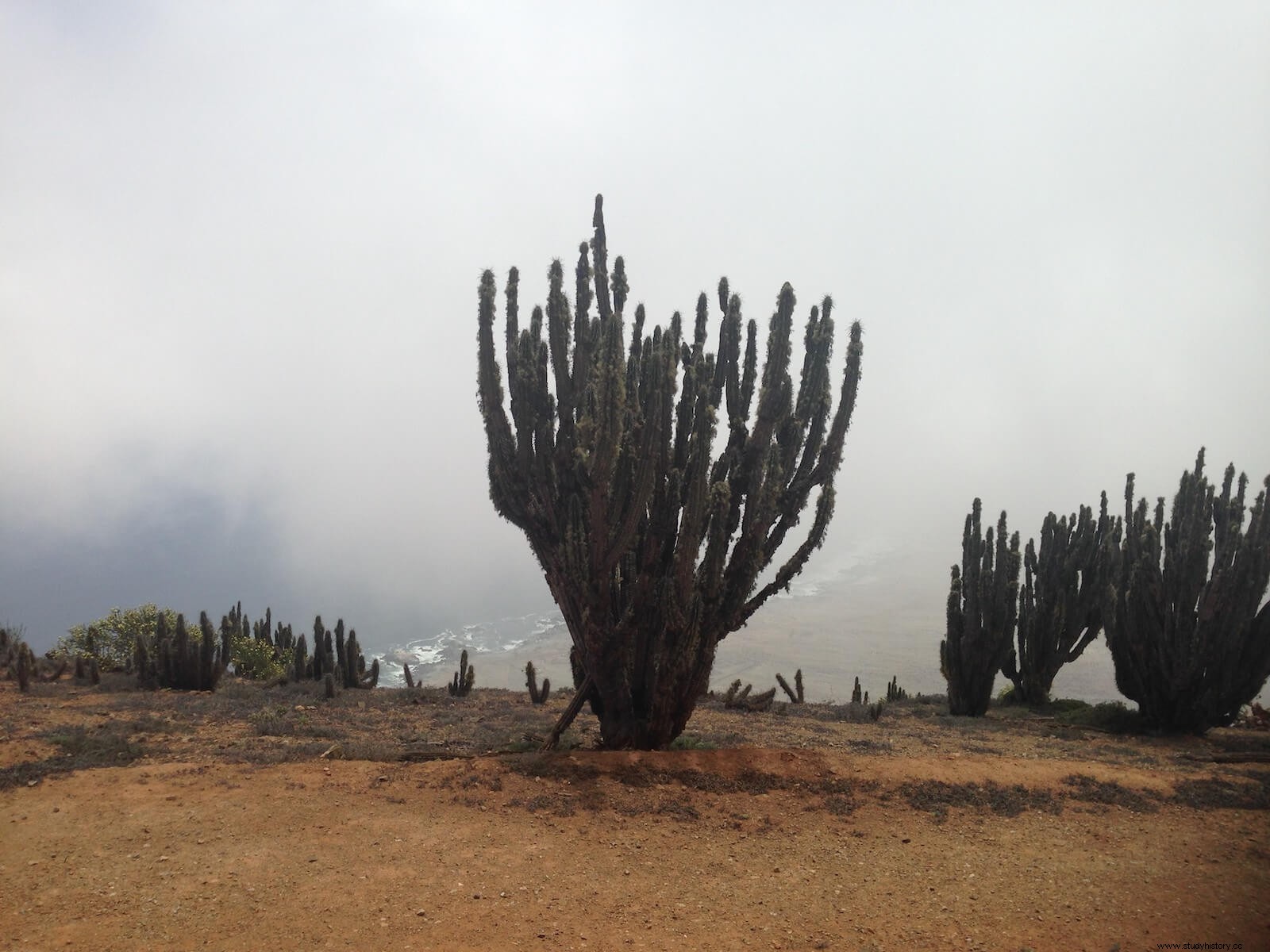
The history of humanity has been narrated in different forms, using different media and actors, thus constructing discourses that vary according to each community and historical moment. Currently, scientific discourse is one of the most relevant and, despite the value of "neutrality" that is recognized, it is conditioned by the social context of those who propose, validate and disseminate it. In fact, although it is true that scientific discourses are the result of research processes and accumulated knowledge, some of them are not necessarily up-to-date and are disseminated socially dragging ideas that in purely academic fields are either no longer used or are in reevaluation process. Examples of the above correspond to the androcentric and eurocentric visions in the field of Human Sciences . In the first approach, the engine of change focuses on the role of men, based on the characteristics or tasks traditionally attributed to the masculine. In this sense, the hunting of large prey, documented in ethnography as an activity predominantly carried out by men, has played a fundamental role in addressing the study of past societies. One of the multiple consequences that this type of reasoning can imply is that of assuming the preponderance of certain segments of the population over others in the historical trajectories of certain human groups and, therefore, also of Humanity. In this way, an idea of global "progress" is projected in which some have participated actively, while others have done so only passively.
For its part, the Eurocentric perspective proposes a single form of development and assumes as normal what is proper to its context and its historical trajectory. In this way, those territories inhabited by communities that do, think and feel differently, are displaced to the last echelon within hierarchical relationships that to this day consider Europe as a "civilizing center". This is particularly evident in the study of societies with other ways of life, such as hunter-gatherer communities . For years, these populations have been studied through a lens that has produced models that simplify their ways of life. A lens that focuses and amplifies the activity of hunting to the detriment of gathering, despite the fact that the latter, far from being a generic activity with an apparent lower return, involves countless practices, knowledge and diverse relationships between people and the natural world that are fundamental for the comprehensive understanding of human history and also of the anthropization of the planet.
The importance of archaeobotany
In this scenario, the plants have only had an anecdotal participation , being commonly conceived as secondary resources together with others such as minor fauna, marine resources, etc. This secondary role in the archaeological explanation is largely justified on the basis of the absence of remains of plant consumption in hunter-gatherer sites, since generally archaeobotanical remains are not usually preserved over time, while other remains such as part of the fauna or lithics do not present this type of problem.
However, we fortunately have examples of well-preserved hunter-gatherer sites, which give us a true, unbiased picture of what those camps must have been like. In all of them,the existence of archaeobotanical remains is massive . Such is the case of the Israeli site of Ohalo II, where the exceptional preservation conditions allowed to identify, in a chronology of 19,000 years BP, more than 60,000 botanical remains in an area of 12m 2 (Weiss et al. 2008).
This shows to what extent in archaeological research, the absence of evidence is not always evidence of absence. Currently, the technical and methodological development of our discipline allows the recovery of evidence that is not initially visible throughout the fieldwork. Archaeobotany has played an extremely relevant role by developing methods specifically aimed at generating plant-related data. The study of charred wood (anthracology), that of seeds (carpology), pollen (palynology) or the most recent analysis of micro-remains such as the analysis of mineralized cells (phytoliths), starch or different plant tissues (such as charred parenchyma) contribute to producing data on these consumptions.
As part of the biased discourses mentioned above, the idea that only some landscapes are key to understanding the development of human communities remains alive, while the landscapes that move away from the European frame of reference –literally and figuratively–, they have been systematically marginalized, the deserts representing extreme cases.
Extreme habitats. The Atacama Desert
Deserts are fundamentally defined as ecosystems with an arid climate , where precipitation, depending on its amount, generates sub-arid, semi-arid, arid and hyper-arid environments. In any case, these precipitations are always scarce, promoting that the living beings that inhabit these spaces are extremely adapted to the scarcity of water resources. The case of hot arid zones is also especially interesting given the numerous processes of desertification currently in force and present even in the Iberian Peninsula.

Beyond the geographic and biological characteristics of the deserts, there is also a cultural dimension around them, which undoubtedly affects our perception of them. In the collective imagination, deserts are characterized by their uninhabitability, with an idea of "inhospitable" or "infertile" that is also associated with the absence of life forms but also of people. However, deserts have been permanently inhabited by different human populations. The studies are conclusive in affirming that the beginning of the occupation of these spaces goes back thousands of years, with archaeological evidence for the Sahara, the Arabian Peninsula, Namibia, the Kalahari, the Sonoran desert or the Atacama desert. The latter is our focus of study, being a paradigmatic case because it is the driest desert in the world in which hunter-gatherer and agropastoral societies developed their existence over millennia, until today.
In northern Chile, in the Atacama desert we found a coast that receives little to no rainfall, with few torrential rains usually associated with the El Niño phenomenon (Figure 1). Despite this, the camanchaca (Figure 2), a coastal fog in the area, generates a relative humidity that allows the existence of plant communities such as lichens, annual herbaceous plants, cacti and some shrubs. This variety of vegetables has been permanently used by human communities until today, whether as food, fuel, raw material or medicine.
The ARVCODA project –Archaeology of Plant Resource Consumption in the Atacama Desert , arises from an intramural project of the CSIC, Archeology, coastal deserts and visibility of plant resources (190405). Both projects, coordinated from the IMF-CSIC, are based on a collaboration with the Department of Anthropology of the University of Chile (currently with the participation of other institutions – University College London, Universitat Autònoma de Barcelona, LMU München and Universidad Católica del Norte). – and seek to evaluate a whole series of methodological issues and the visibility of a part of the archaeological record.The project will implement a methodology to evaluate the use of plant resources on a broad time scale, which includes the Early and Middle Holocene of the Atacama coast, periods in which the main known paleoenvironmental and paleoceanographic transformations took place for the last 12,000 years in the study area.
Thus, ARVCODA addresses two of the main marginalized elements in the discourse surrounding hunter-gatherer societies:the use of plants in this type of society and their consumption in desert areas . The project focuses particularly on fuel use, as hearths are often apparent throughout fieldwork and are systematically analyzed in archaeology. In addition, given the good conservation of charred archaeobotanical remains, starting from this type of evidence greatly facilitates research. The combined use of different techniques will allow not only to generate new data but also to refine or strengthen already available information, so that significant contributions can be made on the lifestyles and environmental management of the populations of the Atacama desert coast prior to European contact. All this will allow us to add the present analyzes to the studies carried out previously by Chilean colleagues (Ugalde et al. 2020), allowing a regional perspective.
Algae and cacti
ARVCODA raises, in addition to identifying what those resources were used as fuel and, if possible, recognizing and suggesting the use of alternative resources. We refer specifically to the possible use of algae and cacti , widely available in the study area (Figure 3). In certain environmental contexts, such as deserts or certain coastal areas, their use seems logical and expected since they form an integral part of the landscape known and inhabited by past societies. However, despite the fact that ethnographic documentation allows us to maintain that both algae and cacti have been frequently used for various purposes by non-industrialized societies, their use has been scarcely explored in archaeology.

The case of Monte Verde, in the south of Chile and with a chronology around 14,000 years BP, is interesting for the identification of algae remains (Dillehay et al. 2008). In northern Chile, the use of algae has received little archaeological attention, possibly due to its difficult recognition at the macroscopic level. It is not surprising that their identification has been possible in sites with good conservation in the northern area of the Atacama coast (e.g.; Ramirez and Quevedo 2000; Núñez et al. 1974). One of the most frequent mentions about the use of algae, and its specific use as fuel , corresponds to the compacted ash strata (Figures 4 and 5) present in architectural-funerary structures distributed from the Loa River to Chañaral, during the ca. 5700-4000 years before present (e.g., Ballester and Gallardo 2011; Núñez et al. 1974; Núñez and Santoro, 2011; Salazar et al., 2015). Although the potential use of this conspicuous intertidal resource as fuel by the coastal populations of the Atacama Desert has begun to form part of some current archaeological and experimental reflections (see Hernández 2020), it continues to be a hypothesis to be tested through lines of evidence. direct.
To complement archaeological approaches, current modeling and simulation techniques allow us to study fuel consumption from the point of view of the needs of communities of agents that move over a territory virtual. This gives us access to a different approach to the study of past behavior, in which the needs of a community can be parameterized and, together with information on the productivity of the environment and archaeological data, allow a broader vision of the problem to be studied. In our case, it is possible to approximate the volume of algae that is deposited on the coast, the density of inhabitants or the availability of other fuels, thus generating an alternative tool to evaluate the use of algae as fuel.
Cacti, on the other hand, have been historically present in archaeological discourse of the coast of the Norte Grande of Chile, as they make up raw materials of technological relevance for fishing. The extraction and treatment of cactus spines allowed the communities to make different tools, such as hooks and also retaining barbs for harpoons (Llagostera 1989, Núñez and Santoro 2011). It is also worth noting the archaeological mentions as construction materials, with records of the use of their trunks as poles or structural elements in architectural-funerary features (see Llagostera 1989; Núñez et al. 1974, Núñez and Santoro 2011).

ARVCODA will develop methodologies aimed at recognizing diagnostic criteria that allow contrasting or delving specifically into the use of cacti or algae. Beyond the presence of macro remains, identifiable based on anatomical features under the microscope, there are other indicators around which it is possible to develop specific identification methodologies linked, for example, to the presence of calcium oxalates, present in cacti. For the Early Holocene, the site of San Ramón 15 will be included, a context of mining exploitation located in the Cordillera de la Costa and with systematic use of fuel, and Alero 224A, a residential camp. In the case of the Middle Holocene, Zapatero and Hornos de Cal will be worked on, both residential shell mounds generated over millennia of semi-permanent occupation.
The results derived from this research will provide new tools for understanding the hunter-gatherer communities of the region, as well as questioning the approaches taken uncritically. Thus, thanks to this type of study the historiographic vision of our past becomes richer and more complete , helping to overcome biases established by decades of research in only some aspects of the life of historical communities. A more general and inclusive vision gives us the tools to better understand human nature, and how we have come to structure present societies through the palette of possibilities that the elements available in our environment give us.
References
- Ballester, B., &Gallardo, F. (2011). Prehistoric and historic networks on the Atacama Desert coast (northern Chile). Antiquity , 85 (329), 875–889. https://doi.org/10.1017/S0003598X0006837X
- Dillehay, T. D., Ramírez, C., Pino, M., Collins, M. B., Rossen, J., &Pino-Navarro, J. D. (2008). Monte Verde:seaweed, food, medicine, and the peopling of South America. Sscience , 320 (5877), 784-786.
- Hernández, V. (2020). Algae, fire and ashes. An experimental approach to the preparation of ash layers in ca. 6000-4500 cal. AP of the Areica coast . Memory to opt for the Title of Archaeologist. University of Tarapaca, Chile.
- Llagostera, A. (1989). Sea hunting and fishing (9000 to 1000 BC). In Prehistory. From its Origins to the Dawn of the Conquest (Hidalgo, J., Schiappacasse, V., Niemeyer, H., Aldunate, C. &Solimano, I., pp. 57-79). Editorial Andres Bello, Santiago.
- Núñez, L., Zlatar, V., &Núñez, P. (1974). Caleta Huelén-42:An early village in northern Chile:preliminary note (University Press). University of Panama.
- Núñez, L., &Santoro, C. M. (2011). The archaic-formative transit in the circumpuna and western valleys of the south central Andean:towards the "Neolithic" changes. Chungará (Arica) , 43 (SPECIAL), 487-530.
- Ramírez, M. &Quevedo, S. (2000). Finding of Lessonia nigrescens (Phaeophyceae) in the burial of the Tiahuanaco Atacameño Pisagua cemetery (Max Uhle Collection). Newsletter of the National Museum of Natural History 49:99-108.
- Salazar, D., Figueroa, V., Andrade, P., Salinas, H., Olguín, L., Power, X., Rebolledo, S., Parra, S., Orellana, H., &Urrea, J. (2015). Chronology and economic organization of the archaic populations of the Taltal coast. Atacameño Studies , 50 , 07–46. http://dx.doi.org/10.4067/S0718-10432015000100002
- Ugalde, P.C., McRostie, V., Gayo, E.M. et al. 13,000 years of sociocultural plant use in the Atacama Desert of northern Chile. Veget Hist Archaeobot (2020). https://doi.org/10.1007/s00334-020-00783-1
- Weiss, E., Kislev, M. E., Simchoni, O., Nadel, D., &Tschauner, H. (2008). Plant-food preparation area on an Upper Paleolithic brush hut floor at Ohalo II, Israel. Journal of Archaeological Science, 35(8), 2400-2414.
